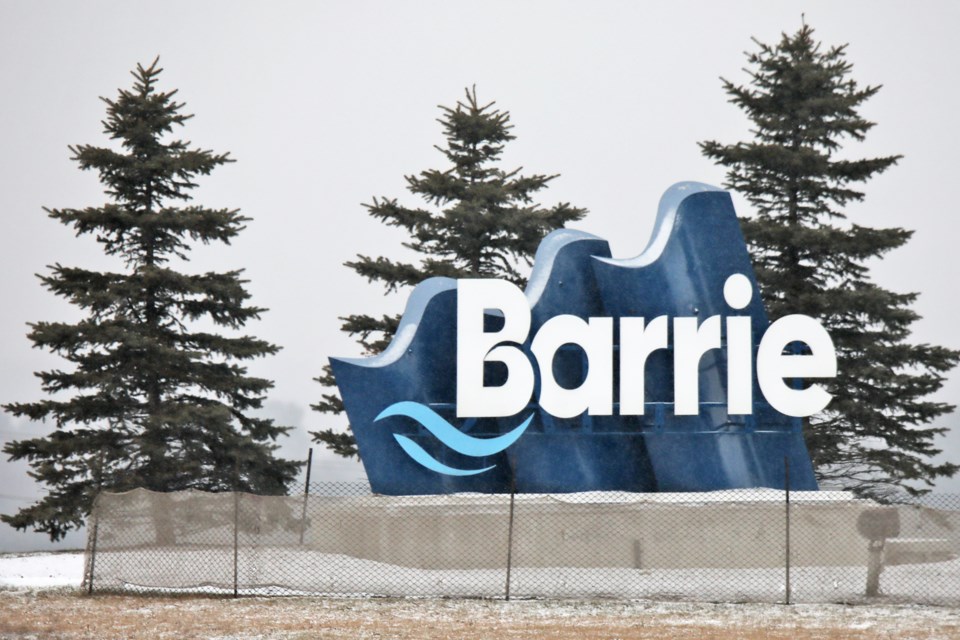Plans to redraw Barrie’s boundaries to absorb neighbouring land are needed, but after more study.
City council passed a motion to that effect Wednesday night.
“If we are going to hit our targets (on population and jobs), we can’t do it within the lands we have,” said Coun. Gary Harvey.
“Intensification is the only way forward, the data is clear,” said Coun. Sergio Morales. “Without annexation, there’s no path forward.”
By direct motion, council unanimously passed a motion its members say stems from a joint land needs analysis and study by Hemson Consulting, a Toronto firm.
The motion carries a long preamble, but states that with the city’s experience with developable land within its boundary and historical experience with the 2009 annexation with Innisfil, the initial land-request proposals to the townships of Springwater and Oro-Medonte should be reassessed to better respect and identify the city’s demonstrated need for vacant land required for comprehensive community employment land, and residential housing, in order to meet provincial targets of a Barrie population of 298,000 in 2051.

Barrie’s initial land-request proposal to Oro-Medonte Township was for 772 hectares, or almost 1,908 acres, east of Penetanguishene Road, south of Gore Road, west of Line 1 South and north of the Shanty Bay rural settlement area. This land consists of active farmland and environmentally sensitive features, the township says.
Barrie has also targeted three parcels of land in Springwater for boundary expansion, totalling 1,324 hectares or almost 3,272 acres.
Hemson estimates Barrie has 793 hectares, or 1,960 acres, of vacant industrial land, although city staff say that number should be trimmed by 20 per cent because of a new definition for 'employment land.'
The direct motion, which passed unanimously, also includes an updated request to include the Little Lake area land, in addition to the 4,000 acres of gross land, and it be forwarded to the Province of Ontario and the provincial land facilitator with a request for this matter to be dealt with quickly.
Mayor Alex Nuttall and chief administrative officer Michael Prowse will continue meeting with the provincial land facilitator to negotiate an update to Barrie’s border, with neighbouring municipalities, and staff will report back on Jan. 8, 2025 with Hemson’s scope of work to proceed with the third stage to identify Barrie’s border with neighbouring municipalities.
The direct motion passed by council Wednesday also includes conclusions from the Hemson report in its preamble. This includes that there is a need for an additional 930 hectares (2,298 acres) of land for comprehensive community/employment area uses and residential development in Barrie, which could be addressed through a boundary adjustment.
And of the vacant land identified within Barrie, the natural heritage areas that exist within these vacant lands, with several of the parcels of land being vacant within Barrie’s existing boundary, and as a result of them being undevelopable, was not addressed as part of the Hemson report.
A review of the 2009 Barrie-Innisfil boundary adjustment changed Barrie’s boundary to include 2,293 hectares of land, with 61 per cent of it being developable and the remaining being natural heritage/environmentally protected.
And a review of the data, the direct motion reads, says it’s reasonable to consider that approximately 60 per cent of land within a new expanded area would be developable
As Barrie owns most vacant land surrounding Little Lake, the city would work with the province to establish a protection plan for the land surrounding it.
For the city to achieve the 2,300 acres of developable land, Barrie would require approximately 4,000 acres of gross land, a much larger number than initially proposed by the city to the townships of Springwater and Oro-Medonte, the direct motion reads.
The motion also says it’s understood by all that there will be no servicing provided to the neighbouring municipalities without a boundary adjustment.
Oro-Medonte Mayor Randy Greenlaw has said the Hemson Consulting report confirms that Barrie has sufficient employment land to meet its long-term demand through 2051. He also said the land located in Oro-Medonte requested by the city to expand Barrie’s boundary is not needed nor is it appropriate for industrial purposes.
Hemson offers two options for area land needs.
The first choice maintains municipal boundaries. Growth would slow in Barrie, with some growth shifting to Oro-Medonte and Springwater, likely requiring regional co-ordination and servicing agreements. Slower growth in Barrie may be expected from the mid-2030s (residential) and mid-2040s (employment).
The second choice is to adjust municipal boundaries. The annexation of land to Barrie would address community area needs, requiring detailed evaluation of servicing, fiscal impacts and environmental considerations. Under this option, provision should be made to address future employment area needs before and after 2051.
“I can’t be definitive which one (is best) without more analysis,” said Stefan Krzeczunowicz of Hemson. “Both are perfectly viable options, reasonable options.”
It’s been more than a year since Nuttall made a presentation to a provincial standing committee that included a proposal to expand Barrie’s boundaries into Oro-Medonte and Springwater, saying it was required because the city does not have enough employment land.
Nuttall has said expanding Barrie’s boundaries could lead to the creation of up to 20,000 new industrial manufacturing and warehousing jobs during the next 20 years.
Springwater and Oro-Medonte councils also discussed the Hemson report earlier in the day and agreed to continue talks with Barrie.



